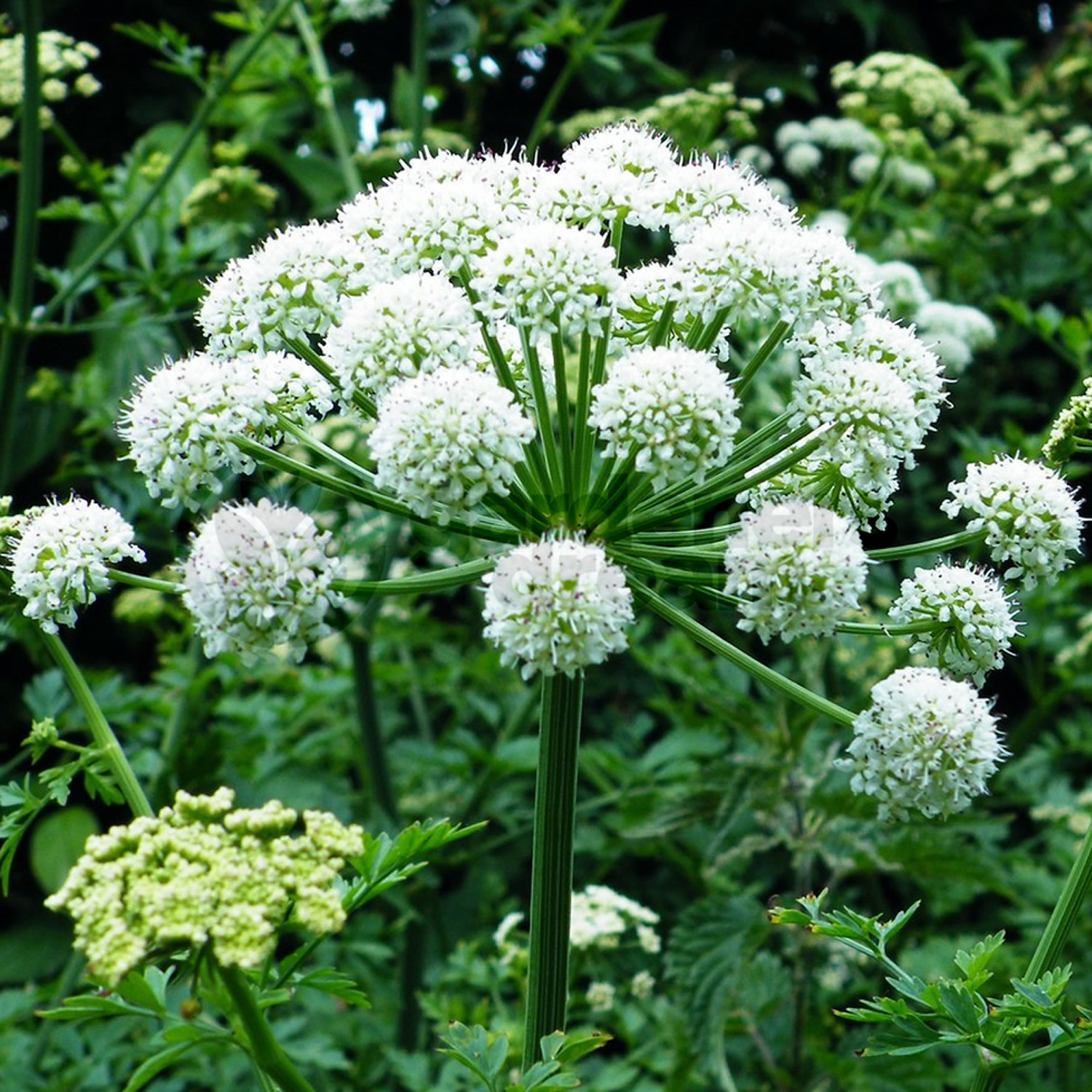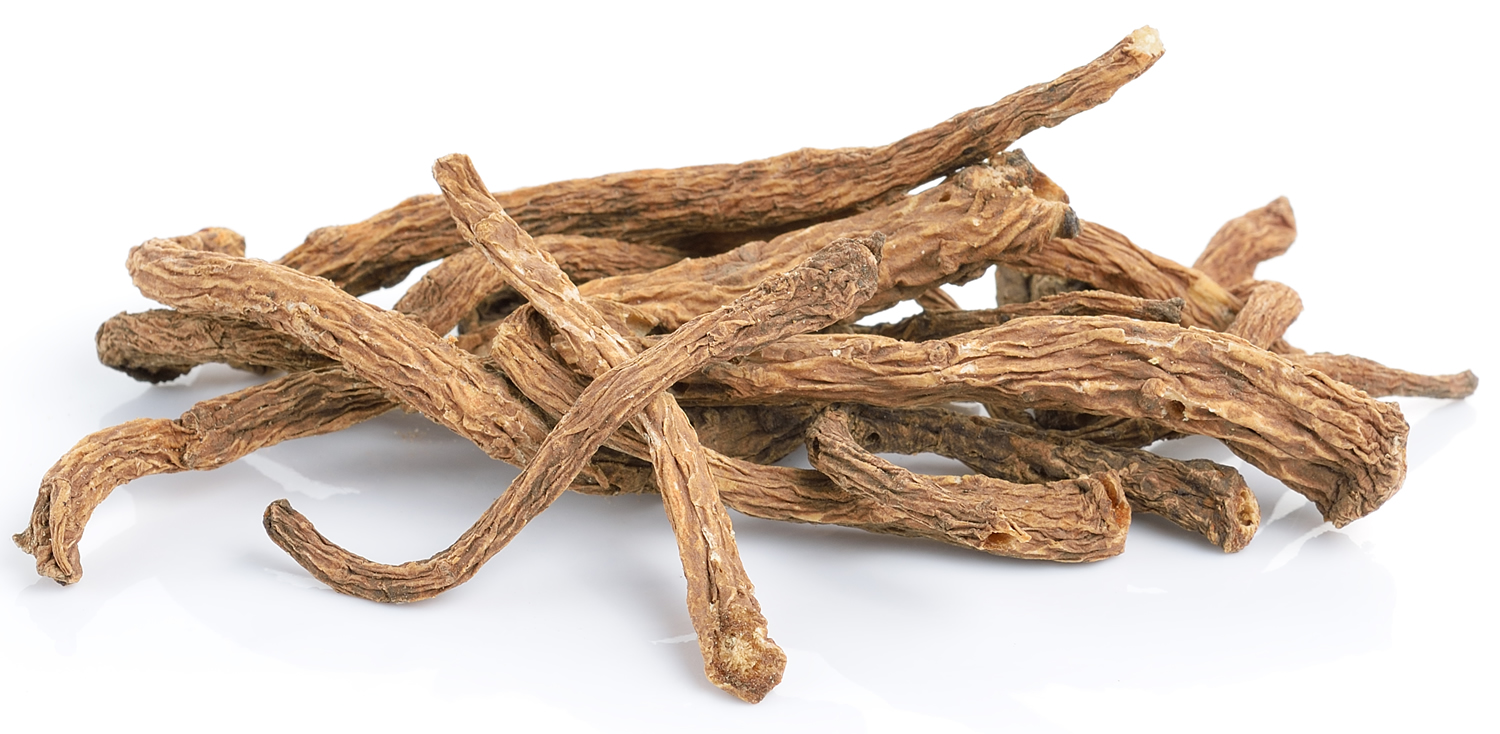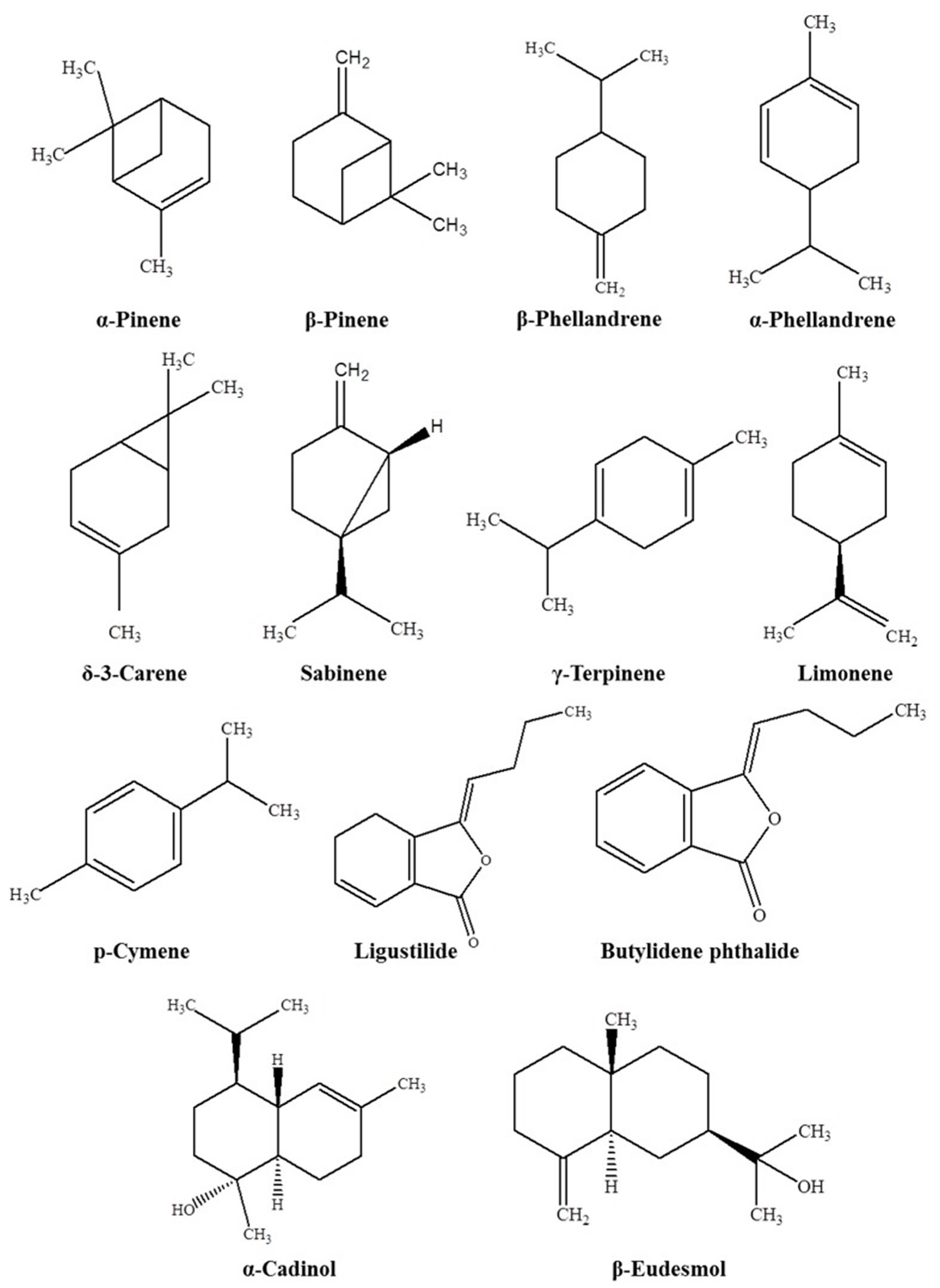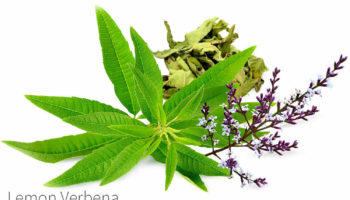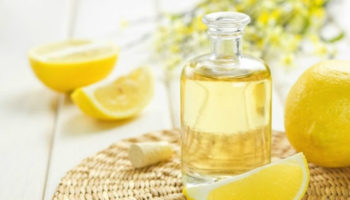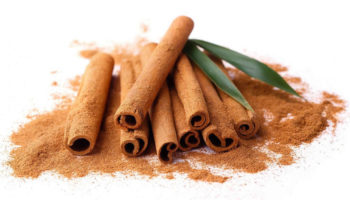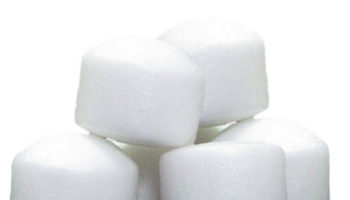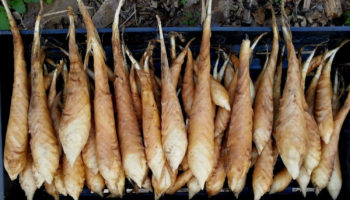Contents
What is angelica
Angelica is a genus of about 90 species of tall biennial and perennial herbs in the family Apiaceae (Umbelliferae), that are widely distributed in Asia, Europe, and North America. They grow to 1–3 m (3 ft 3 in–9 ft 10 in) tall, with large bipinnate leaves and large compound umbels of white or greenish-white flowers (see Figure 1). In these, a total of 45 Angelica species (32 endemic species) are distributed in China 1. Various species of Angelica have been used in the traditional systems of medicine for several centuries to treat many ailments. Angelica essential oils have been used for the treatment of various health problems, including malaria, gynecological diseases, fever, anemia, and arthritis 2. Angelica essential oils are complex mixtures of low molecular weight compounds, especially terpenoids and their oxygenated compounds. These components deliver specific fragrance and biological properties to essential oils. Previously, several scientists reported the volatile composition of different Angelica species using various extraction techniques such as steam distillation, hydrodistillation, solvent-free solid injector, and supercritical fluid extraction.
Figure 1. Angelica plant
Figure 2. Angelica root
Angelica root essential oil
Angelica essential oils exhibit several pharmacological activities, such as antioxidant, antibacterial, antifungal, antimicrobial, and insecticidal activities 2.
Table 1. Angelica essential oils and their major components
| S. No. | Species | Parts | Extraction Method; Extraction Time; Yield | Place of Collection | Major Components | References |
|---|---|---|---|---|---|---|
| 1 | Angelica archangelica L. | Seeds (fruits) from three habitats | Hydrodistillation; 2 h; 0.8–1.4% | Svencionys, Prienai and Vilnius districts in Lithunia | β-phellandrene (33.6–63.4%) and α-pinene (4.2–12.8%) | 3 |
| Fruit of two chemotypes | Steam distillation; 5 h; 0.17–0.51% | Reykjavik, Iceland | α-pinene (41.4%, 28.9%, 14.4%), bicyclogermacrene (10.1%), and β-phellandrene (37.8% and 55.2%) | 4 | ||
| Root (1–2, 3–4 and >5 mm) | Hydrodistillation; 30 min | Rome, Italy | α-pinene (23.89–32.69%) and δ-3-carene (3.41–17.07%) | 5 | ||
| Root (3 habitats) | Hydrodistillation; 2 h; 0.2–0.5% | Svencionys, Prienai and Vilnius districts in Lithuania | α-pinene (15.7–20.8%), δ-3-carene (15.4–16.9%), limonene (8.0–9.2%), β-phellandrene (13.5–15.4%), α-phellandrene (8.0–9.1%), and p-cymene (6.8–10.6%) | 6 | ||
| Root (3 different altitudes) | Hydrodistillation; 3 h; 0.28–0.35% | Uttarakashi, Rudraprayag and Pothiwasa in Uttarakhand, India | dillapiole (35.93–91.55%) and nothoapiole (0.14–62.81%) | 7 | ||
| Root | Hydrodistillation; 2 h; 0.9% | Urbino, Italy | α-pinene (21.3%), δ-3-carene (16.5%), limonene (16.4%), and α-phellandrene (8.7%) | 8 | ||
| 2 | Angelica acutiloba (Siebold & Zucc.) Kitag. | Leaves, petiole and root | Hydrodistillation; 3 h; 0.44% | Rutgers University, New Brunswick, NJ, USA | Leaves: ligustilide (11.61%) and butylidene phthalide (7.29%) Petiole: butylidene phthalide (10.76%) Root: nonane (24.85%) and α-pinene (31.59%) | 9 |
| Root | Solvent free solid injector; injection time—5 min and pre-heating time—7 min) | Yeosu Province, Republic of Korea | butylidene phthalide (17.82%), furfural (13.67%), 2-furanmethanol (11.97%), 5-methyl furfural (8.50%), maltol (7.28%), and butylidene dihydro-phthalide (5.78%) | 10 | ||
| Root, stem and leaves | Steam distillation; 5 h; 0.05 (root), 0.06 (stem), and 0.12 (leaves) | Nantou, Taiwan | 3n-butyl phthalide (30.8–37.9%), γ-terpinene (21.1–27.2%), p-cymene (3.6–11.6%), and cis-β-ocimene (7.0–7.4%) | 11 | ||
| Headspace-solid phase microextraction; 20 min | Nantou, Taiwan | γ-terpinene (41.2–52.1%), p-cymene (10.6–17.0%), β-myrcene (6.7–8.6%), cis-β-ocimene (4.9–7.4%), and alloocimene (4.2–5.3%) | 11 | |||
| 3 | Angelica glauca Edgew | Whole plant | Hydrodistillation; 3 h, 0.17% | Jammu and Kashmir, Pakistan | α-phellandrene (18.0%), β-pinene (14.0%), trans-carveol (16.4%), β-caryophyllene (8.6%), and β-caryophyllene oxide (8.0%). | 12 |
| Aerial parts | Hydrodistillation; 3 h; 0.12% | Khillanmarg areas of Kashmir, India | α-phellandrene (13.5%), trans-carveol (12.0%), β-pinene (11.7%), thujene (7.5%), β-caryophyllene oxide (7.2%), β-caryophyllene (7.0%), γ-terpinene (6.7%), nerolidol (6.5%), and β-bisabolene (5.2%) | 13 | ||
| Root | Hydrodistillation; 5 h; 0.3% and 1.8% | Himalayan locations of Uttarakhand, India | (Z)-ligustilide (40.6–53.0%), (Z)-butylidene phthalide (20.7–32.8%), and (E)-butylidene phthalide (2.5–5.9%) | 14 | ||
| 4 | Angelica gigas Nakai | Leaves, petiole and root | Hydrodistillation; 3 h; 0.18% | Rutgers University, New Brunswick, NJ, USA | Leaves: nonane (10.75%), α-pinene (33.07%), and germacrene (10.05%) Petiole: nonane (8.85%), α-pinene (40.59%), β-phellandrene (7.52%), and myrcene (6.38%) Root: γ-terpinene (14.08%) and ligustilide (46.63%) | 9 |
| Root | Hydrodistillation; 4 h | Yeosu Province, Republic of Korea | nonane (19.99%), α-pinene (44.31%), camphene (6.66%), and δ-limonene (6.26%) | 10 | ||
| Solvent-free solid injector; injection time—5 min and pre-heating time—7 min) | Yeosu Province, Republic of Korea | decursin (29.34%), decursinol angelate (16.83%), lomatin (10.25%), and marmesin (9.33%) | 10 | |||
| Simultaneous steam distillation (n-pentane/diethyl ether); 2 h; 0.31% | Gwangju, Republic of Korea | α-pinene (30.89%), 2,4,6-trimethyl heptane (13.39%), α-limonene (4.29%), and camphene (4.10%) | 15 | |||
| Steam distillation; 1 h 30 min; 0.31% | Pyeongchang, Republic of Korea | α-pinene (28.64%), β-eudesmol (14.80%), nonane (8.49%), and γ-eudesmol (5.97%) | 16 | |||
| Supercritical CO2 extraction; 1 h; 1.67% | Pyeongchang, Republic of Korea | decursin (40.13%), decursinol angelate (28.44%), and β-eudesmol (7.84%) | 16 | |||
| 5 | Angelica sinensis (Oliv.) Diels | Root | Hydrodistillation; 8 h; 0.3% | Gansu Province, China | (Z)-ligustilide 78.61% and (Z)-butylidenephthalide 7.99% | 17 |
| Solvent free solid injector; injection time—5 min and pre-heating time—7 min) | Yeosu Province, Republic of Korea | butylidene dihydro-phthalide, (15.23%), butylidene phthalide (14.27%), furfural (16%), camphene (10.66%), and 4-pyridinol (7.17%) | 10 | |||
| Steam distillation; 3 h; 0.02% | Chiang Mai province, Thailand | 3-N-butylphthalide, butylidenephthalide, ligustilide and di-iso-octyl phthalate | 18 | |||
| 6 | Angelica koreana Maxim. | Root | Steam distillation; 0.28% | Jinbu, Gangwon-do, Republic of Korea | sabinene (31.85%), m-cresol (4.46%), α-pinene (4.00%), and α-bisabolol (3.63%) | 19 |
| 7 | Angelica dahurica (Fisch. Ex Hoffm.) Benth. & Hook. | Root | Supercritical CO2 extraction; 2 h; 1.8% | Jilin, China | dodecyl alcohol (13.71%), elemene (7.54%), hexadecanoic acid, ethyl ester (7.32%), 1-pentadecanol (6.08%), and α-pinene (6.25%), | 20 |
| Hydrodistillation; 3 h; 0.45% | Beijing, China | α-pinene (46.3%), sabinene (9.3%), myrcene (5.5%), 1-dodecanol (5.2%), and terpinen-4-ol (4.9%). | 21 | |||
| 8 | Angelica pancicii Vandas ex Velen. | Root | Hydrodistillation; 2 h | Balkan mountains, Serbia | Liquid and headspace injection modes: β-phellandrene (54.9% and 60.1%), α-pinene (14.5% and 20.1%), and α-phellandrene (4.5% and 4.3%). | 22 |
| 9 | Angelica pubescentis Maxim. | Root | Hydrodistillation; 3 h; 0.65% | Beijing, China | α-pinene (37.6%), p-cymene (11.6%), limonene (8.7%), and cryptone (6.7%) | 21 |
| 10 | Angelica urumiensis (Mozaffarian) | Stem | Hydrodistillation; 3 h; 0.2% | Uremia, Province West Azerbaijan, Iran | Stem: α-cadinol (9.24%), (epi)-α-cadinol (5.76%), and δ-cadenine (6.11%) | 23 |
| 11 | Angelica urumiensis (Mozaffarian) | Leaves | Hydrodistillation; 3 h; 0.18% | Uremia, Province West Azerbaijan, Iran | Leaves: α-cadinol (20.2%), hexahydrofarnesyl acetone (10.03%), 1-dodecanol (7.55%), linoleic acid (6.37%) and oleic acid (5.34%) | 23 |
| 12 | Angelica viridiflora (Turcz.) Benth. ex Maxim. | Aerial parts | Steam distillation; 2 h; 0.2% | Shkotovskii District, Primorsky Krai, Russia | caryophyllene oxide (61.7%) and 3,4-dimethyl-3-cyclohexan-1-carboxaldehdye (5.8%) | 24 |
| 13 | Angelica cincta Boissieu | Aerial parts | Steam distillation; 2 h; 0.2% | Shkotovskii District, Primorsky Krai, Russia | α-pinene (67.2%), sabinene (5.8%) and β-pinene (4.9%) | 24 |
Table 2. Angelica essential oils biological activities
| S. No. | Species | Parts | Biological activity | Model | References |
|---|---|---|---|---|---|
| 1 | Angelica archangelica L. | Seeds | Antioxidant | Aldehyde/Carboxylic Acid Assay, DPPH radical scavenging assay, and Malonaldehyde/Gas Chromatography Assay | 25 |
| Fruit of two chemotypes | Cytotoxic effect | Human pancreas cancer cell line PANC-1 and the mouse breast cancer cell line Crl | 4 | ||
| Root | Anti-seizure | Maximal electroshock and pentylenetetrazol-induced seizures in mice | 26 | ||
| Anti-aflatoxigenic and antioxidant activities | Aspergillus flavus DPPH radical scavenging assay | 27 | |||
| Antimicrobial | Fusarium genus, Botrytis cinerea, and Alternaria solani, Clostridium difficile, Clostridium perfringens, Enterococcus faecalis, Eubacterium limosum, Peptostreptococcus anaerobius, and Candida albicans | 8 | |||
| 2 | Angelica gigas Nakai | Root | Nicotine Sensitization | Repeated nicotine-induced locomotor activity and extracellular dopamine levels in the nucleus accumbens of rats | 28 |
| Human EEG | Increased absolute low beta (left temporal and left parietal) activity | 16 | |||
| Leaves | Immunotoxicity | Larvae of Aedes aegypti | 29 | ||
| 3 | Angelica glauca Edgew | Whole plant | Antioxidant, antimicrobial, and phytotoxic | Bacteria: Staphylococcus aureus, Bacillus subtilis, Escherichia coli, and Pasteurella multocida Fungi: Candida albicans, Microsporum canis, Aspergillus flavus and Fusarium solani. DPPH radical scavenging assay Phytotoxic activity against Lemna minor | 12 |
| Broncho-relaxant | Airway was induced using histamine aerosol in guinea pigs and ovalbumin aerosol in albino mice. | 30 | |||
| 4 | Angelica sinensis (Oliv.) Diels | Root | Anti-inflammatory | Carrageenan-induced rats | 17 |
| Antioxidant | DPPH, ABTS scavenging, and β-carotene bleaching assays. | 31 | |||
| Anti-inflammatory | Carrageenan-induced rats and mechanism by plasma metabolomics approach | 32 | |||
| Antibacterial | Staphylococcus aureus, Staphylococcus chromogenes, and Streptococcus uberis | 33 | |||
| Anti-inflammatory | Carrageenan-induced acute inflammation model rats | 34 | |||
| Anti-inflammatory | Lipopolysaccharide-induced inflammation rat model | 35 | |||
| Anxiolytic | Elevated plus-maze, light/dark and stress-induced hyperthermia tests | 36 | |||
| Social interaction test of anxiety and the hole-board test | 37 | ||||
| Repellent | Against Aedes aegypti | 18 | |||
| 5 | Angelica koreana Maxim. | Root | Antifungal and antioxidant | Aspergillus (A. flavus, A. fumigaus, A. niger, A. terreus and A. versicolor) and Trichophyton (T. mentagrophytes, T. rubrum and T. tonsurans) species DPPH scavenging, nitrite inhibition, and reducing power | 19 |
| 6 | Angelica dahurica (Fisch. Ex Hoffm.) Benth. & Hook. | Root | Anti-inflammatory and immunomodulating properties | Xylene-induced acute ear swelling and carrageenan-induced acute paw edema in mice; anti-inflammatory and immunomodulating properties in Freund’s complete adjuvant (FCA)-induced arthritis in rats. | 20 |
| Enhance sensitivity of MCF-7/ADR breast cancer cells to doxorubicin | MDR human breast cancer MCF-7/ADR cells | 38 | |||
| Insecticidal | Yellow fever mosquito, Aedes aegypti, and azalea lace bugs, Stephanitis pyrioides | 21 | |||
| Antibacterial | Staphylococcus aureus, Staphylococcus chromogenes, and Streptococcus uberis | 33 | |||
| Immunotoxicity | Larvae of Aedes aegypti | 29 | |||
| 7 | Angelica pubescentis Maxim. | Root | Antifungal and Insecticidal | Colletotrichum acutatum, Colletotrichum fragariae, and Colletotrichum gloeosporioides, Yellow fever mosquito, Aedes aegypti, and azalea lace bugs, Stephanitis pyrioides | 21 |
| 8 | Angelica anomala Avé-Lall., Angelica cartilagino-marginata var. distans, Angelica czernevia, Angelica decursiva (Miq.) Franch. & Sav., Angelica fallax H. Boissieu , Angelica japonica A. Gray | Leaves | Immunotoxicity | Larvae of Aedes aegypti | 29 |
| 9 | Angelica species | Root | Penetration Enhancers for Transdermal Administration of Ibuprofen | Therapeutic efficacy of ibuprofen with essential oil was evaluated using dysmenorrheal model mice | 39 |
| Skin permeation of drugs | Skin permeation of ibuprofen across rat abdominal skin | 40 |
Note: DPPH: 1,1-diphenyl-1-picrylhydrazyl; ABTS: 2,2-azino-bis(3ethylbenzo-thiazoline-6-sulfonic acid); EEG: electroencephalographic activity; MDR: multidrug resistance.
[Source 2]Angelica essential oils chemical composition
The main aim of this review is to offer an overview on the chemical composition of essential oils from different species of Angelica growing in various countries. Table 1 above shows the plant name, plant parts, extraction methods, yield, and the major components of essential oils in relation to different species of Angelica. The published reports revealed that the essential oils of the genus Angelica isolated by steam distillation or the hydrodistillation method mainly consist of monoterpene hydrocarbons. Figure 3 below depicts the chemical structure of some of the major components of essential oils from Angelica species.
In Angelica archangelica seed essential oils, β-phellandrene (33.6–63.4%) and α-pinene (4.2–12.8%) were detected as the most abundant components 41. On the other hand, α-pinene (21.3%), δ-3-carene (16.5%), limonene (16.4%), and α-phellandrene (8.7%) were the most abundant components in the essential oil of Angelica archangelica roots growing in Italy 42. Nivinskiene et al. 6 studied the essential oil composition of Angelica archangelica roots collected from three habitats (Svencionys, Prienai, and Vilnius districts in Lithuania) between 1995–2002. α-Pinene (15.7–20.8%) was the major essential oil component in two localities, whereas β-phellandrene (13.8–18.5%) and α-pinene (11.4–15.0%) were registered as the major essential oil components in the third locality. The Angelica essential oils contained 67.3–79.9% of monoterpenes, 9.6–19.4% of sesquiterpenes, and 3.9–6.3% of macrocyclic lactones. Chauhan et al. 7 found that the essential oils of Angelica archangelica rhizomes obtained from three different altitudes of western Himalaya mainly contained dillapiole (35.93–91.55%) and nothoapiole (0.1–62.8%). Further, the authors reported that the composition of essential oils varied greatly with the altitude of collection. Pasqua et al. 43 investigated the accumulation of essential oils in the roots of Angelica archangelica subsp. archangelica at different developmental stages. A high concentration of α- and β-phellandrene was found only in taproots exceeding 5 mm in diameter.
The essential oil of the Angelica glauca whole plant collected from Jammu and Kashmir mainly contains α-phellandrene (18.0%), trans-carveol (16.4%), β-pinene (14.0%), β-caryophyllene (8.6%), and β-caryophyllene oxide (8.0%) 12. Agnihotri et al. 44 investigated the composition of essential oil from fresh aerial parts of Angelica glauca growing in Kashmir valley in higher Himalaya (India), and found that α-phellandrene (13.5%), trans-carveol (12.0%), and β-pinene (11.7%) were the major components. The essential oils from the roots of Angelica glauca collected from two alpine Himalayan locations in Uttarakhand (India) highly contain (Z)-ligustilide (40.6–53.0%) and (Z)-butylidene phthalide (20.7–32.8%) 14.
Kim et al. 45 determined the essential oil composition from the rhizomes of Angelica gigas, Angelica sinensis, and Angelica acutiloba by solvent-free solid injector method. Coumarin derivatives such as decursinol angelate (16.83%) and decursin (29.34%) were found to be the most abundant components, followed by lomatin (10.25%), and marmesin (9.33%) in Angelica gigas. Butylidene dihydro-phthalide, (15.23%), butylidene phthalide (14.27%), furfural (16%), and camphene (10.66%) were the main components in Angelica sinensis. Similarly, butylidene phthalide (17.82%) and furfural (13.67%) were registered as the major components in Angelica acutiloba.
Sowndhararajan et al. 46 compared the essential oil composition of Angelica gigas root by steam distillation and supercritical carbon dioxide extract. The essential oil mainly composed of monoterpene hydrocarbons (52.83%), followed by oxygenated sesquiterpenes (25.53%). In these, α-pinene (28.64%), β-eudesmol (14.80%), nonane (8.49%), and γ-eudesmol (5.97%) were the major components in the essential oil of Angelica gigas root. However, decursin (40.13%) and decursinol angelate (28.44%) were detected as the most abundant components in supercritical carbon dioxide extract. α-Pinene (30.89%) was also the major component in the essential oil of Angelica gigas extracted by simultaneous steam distillation and extraction method 47. In another study, the roots of Angelica gigas and Angelica acutiloba were collected from the field of Snyder Research and Extension Farm Rutgers University, New Jersey, and analyzed for their essential oil composition. The main constituents of the Angelica gigas root essential oil were ligustilide (47%) and γ-terpinene (14%). In the case of Angelica acutiloba root essential oil, α-pinene (32%) and nonane (25%) were the major components 9.
Chen et al. 48 compared the volatile compositions of Angelica acutiloba roots, stems, and leaves using steam distillation and headspace solid-phase microextraction. In all three parts, a total of 61 and 33 compounds were detected by steam distillation and headspace solid-phase microextraction, respectively. In the steam distillation, 3n-butyl phthalide, γ-terpinene, p-cymene, and cis-β-ocimene were the main compounds. On the other hand, γ-terpinene and p-cymene were the main compounds in headspace solid-phase microextraction. Further, the authors reported that monoterpene components were found to be higher in the headspace solid-phase microextraction sampling method when compared with steam distillation.
In the essential oil of Angelica major, α-pinene (21.8%) and cis-β-ocimene (30.4%) were found to be the most abundant components 49. The main components in Angelica dahurica essential oil were α-pinene (46.3%), sabinene (9.3%), myrcene (5.5%), 1-dodecanol (5.2%), and terpinen-4-ol (4.9%). In regards to Angelica pubescentis root essential oil, α-pinene (37.6%), p-cymene (11.6%), limonene (8.7%), and cryptone (6.7%) were found to be the major components 50. Champakaew et al. 51 found that 3-N-butylphthalide, butylidene phthalide, ligustilide, and di-iso-octyl phthalate were the main components in Angelica sinensis essential oil. The composition of essential oils of the stem and leaves of Angelica urumiensis were studied by Mohammadi et al. 52. In the essential oil from the leaves, α-cadinol (20.2%), hexahydrofarnesyl acetone (10.03%), and 1-dodecanol (7.55%) were the major components. On the other hand, α-cadinol (9.24%) and δ-cadenine (6.11%) were the major components in the essential oil from the stem. The essential oil compositions of Angelica pancicii were compared by gas chromatography–mass spectrometry liquid injection and headspace-gas chromatography–mass spectrometry modes. In total, 40 compounds were identified in the essential oil by gas chromatography–mass spectrometry liquid injection, and 44 by headspace-gas chromatography–mass spectrometry. In both cases, the main components were β-phellandrene, α-pinene, and α-phellandrene 53. Caryophyllene oxide (61.7%) and α-pinene (67.2%) were detected as the most abundant components in essential oils of Angelica viridiflora and Angelica cincta aerial parts, respectively 23.
Figure 3. Angelica essential oils chemical components
[Source 2]Angelica essential oils potential health benefits and uses
Antioxidant
1,1-Diphenyl-2-picrylhydrazil (DPPH) and 2,2-azino-bis(3ethylbenzo-thiazoline-6-sulfonic acid (ABTS) radical scavenging activities are extensively used measures to evaluate the antioxidant potential of plant extracts or compounds. DPPH, nitrite inhibition, and reducing power were determined to assess the antioxidant activity of Angelica koreana essential oil and its major components. m-Cresol (56.12%) showed stronger DPPH scavenging activity than essential oil (19.31%) and sabinene (4.45%) at the concentration of 16 mg/mL 54. Additionally, sabinene exhibited the strongest reducing power and nitric oxide scavenging activities than the essential oil fraction or m-cresol. Irshad et al. 55 reported that Angelica glauca essential oil exhibited good DPPH radical scavenging and peroxidation inhibition activities. Angelica seed oil showed 39% of DPPH radical scavenging activity at the concentration of 200 μg/mL 25. The antioxidant activity of Angelica sinensis was investigated by DPPH, ABTS, and beta-carotene bleaching assays. Angelica sinensis essential oil and coniferyl ferulate rich fractions 1 and 2 showed strong DPPH (IC50 of 194.7, 42.4 and 15.2 μg/mL, respectively) and ABTS (IC50 of 98.8, 15.9 and 7.8 μg/mL, respectively) radical scavenging activities. Further, coniferyl ferulate rich fractions 1 and 2 exhibited good β-carotene bleaching activity with IC50 values of 11.0 and 2.0 μg/mL, respectively 31. In another study, the DPPH radical scavenging activity of Angelica archangelica essential oil, α-terpineol, phenyl ethyl alcohol, and their combination were determined. The IC50 values of Angelica archangelica essential oil, α-terpineol, and their essential oil-based combination were 1.04, 66.6, and 3.89 μL/mL, respectively 56.
Antimicrobial
Angelica koreana essential oil and its main components, sabinene and m-cresol, showed antifungal activity against different species of Aspergillus and Trichophyton with minimal inhibitory concentrations (MICs) of 125–1000 μg/mL. In addition, essential oil exhibited synergistic activity when combined with itraconazole 54. The essential oil of Angelica glauca showed appreciable antimicrobial activity against selected strains of bacteria (Staphylococcus aureus, Bacillus subtilis, Escherichia coli, and Pasteurella multocida) and fungi (Candida albicans, Microsporum canis, Aspergillus flavus, and Fusarium solani). Among the bacterial strains tested, Escherichia coli and Staphylococcus aureus were the most sensitive bacteria with minimum inhibitory concentration (MIC) values of 141.3 and 159.3 µg/mL, respectively. In regards to fungal strains, Microsporum canis was the most sensitive organism with a MIC value of 178.1 µg/mL 12.
The essential oil of Angelica archangelica root showed considerable antimicrobial activity against Clostridium difficile, Clostridium perfringens, Enterococcus faecalis, Eubacterium limosum, Peptostreptococcus anaerobius, and Candida albicans. Further, Angelica archangelica essential oil showed a weaker antimicrobial activity against the intestinal microflora such as bifidobacteria and lactobacilli. In another study, the essential oil showed antifungal activity against some species of the Fusarium genus, Botrytis cinerea, and Alternaria solani 57. A combination of Angelica archangelica essential oil: Phenyl ethyl alcohol (PEA): α-terpineol (1:1:1) inhibited the growth of Aspergillus flavus NKDW-7 (aflatoxigenic strain) and aflatoxin B1 production at 2.25 and 2.0 μL/mL, respectively. At the concentration of 2.0 μL/mL, the combination showed a >90% decrease in ergosterol content in the plasma membrane of Aspergillus flavus 27.
Cavaleiro et al. 58 evaluated the antifungal activity of the essential oil of Angelica major and its major components, α-pinene and cis-β-ocimene, against clinically important yeasts and molds. Angelica major essential oil exhibited a broad spectrum of antifungal activity, including all tested fungi (animal and human pathogenic species or spoilage fungi): Candida spp., Candida neoformans, Aspergillus spp., and dermatophytes. α-Pinene was more active against all of the tested fungi than cis-β-ocimene. Angelica sinensis and Angelica dahurica essential oils exhibited significant antibacterial activity against three mastitis-causing pathogens: Staphylococcus aureus, Staphylococcus chromogenes, and Streptococcus uberis 33. Tabanca et al. 21 reported that Angelica pubescentis root essential oil exhibited weak antifungal activity against Colletotrichum acutatum, Colletotrichum fragariae, and Colletotrichum gloeosporioides. In the case of Angelica dahurica root essential oil, there was no antifungal activity observed against tested fungal strains.
Insecticidal
Essential oils from the root of Angelica dahurica and Angelica pubescentis were studied as pest management prospectives. When compared with Angelica pubescentis essential oil, Angelica dahurica essential oil showed better biting deterrent and insecticidal activity against Aedes aegypti and Stephanitis pyrioides. In mosquito bioassays, components of Angelica dahurica essential oil, 1-dodecanol and 1-tridecanol, showed antibiting deterrent activity against Aedes aegypti 21. Chung et al. 29 investigated the immunotoxicity effect of essential oils from the leaves of Angelica anomala, Angelica cartilagino-marginata var. distans, Angelica czernevia, Angelica dahurica, Angelica decursiva, Angelica fallax, Angelica gigas, and Angelica japonica. Among them, the essential oil of Angelica dahurica showed a significant toxic effect against early fourth-stage larvae of Aedes aegypti, with a LC50 value of 43.12 ppm. In another study, out of 33 plant species tested, Angelica sinensis essential oil showed the best repellent activity against Aedes aegypti, with a median complete protection time of 7.0 hours 18.
Behavioral
Repeated administration of nicotine can produce behavioral sensitization, and this is a good model for studying drug addiction. Zhao et al. 28 reported that the inhalation of Angelica gigas essential oil significantly ameliorated nicotine-induced behavioral sensitization by decreasing dopamine release in the nucleus accumbens and locomotor activity in repeated nicotine-induced rats. Pathak et al. 59 found that the essential oil of the Angelica archangelica root exhibited antiseizure activity against electrically and chemically-induced seizures in mice. Chen et al. 60 investigated the anxiolytic activity of Angelica essential oil in a mice model. The results revealed that the essential oil of Angelica exhibited considerable anxiolytic-like effects at the concentration of 30.0 mg/kg (orally), as measured in the elevated plus-maze, the light/dark, and the stress-induced hyperthermia tests. In addition, Angelica essential oil significantly improved the behavioral performances in the social interaction test of anxiety and the hole-board test of exploration and locomotor activity in rats 37. Sharma et al. 61 reported that the essential oil of Angelica glauca exhibited broncho-relaxant activity against histamine and ovalbumin-induced bronchoconstriction in guinea pigs by decreasing absolute blood eosinophil count, serum levels of immunoglobulin E, and the number of eosinophils and neutrophils in bronchoalveolar lavage fluid. Sowndhararajan et al. 16 investigated the effect of inhalation of essential oil of Angelica gigas root on electroencephalographic activity in humans. The results revealed that absolute low beta significantly increased at left temporal and left parietal region during the inhalation of the essential oil of Angelica gigas root, and these changes may contribute to the enhancement of language learning abilities in humans.
Anti-Inflammatory
Zhang et al. 17 used the metabonomics based on gas chromatography–mass spectrometry to study the possible anti-inflammatory mechanisms of essential oil of Angelica sinensis in rats with acute inflammation. In the carrageenan-injected rats, treatment with the essential oil of Angelica sinensis significantly restored the levels of prostaglandin E2, histamine, and 5-hydroxytryptamine in the inflammatory fluid, similar to the normal group. Gas chromatography–mass spectrometry analysis identified 14 metabolite biomarkers detected in the inflammatory fluid. Zhong et al. 34 evaluated the anti-inflammatory effect of essential oils obtained from processed products of Angelica sinensis. For this purpose, essential oils from stir-fried Angelica sinensis, fried Angelica sinensis with alcohol, cooked Angelica sinensis with soil, and fried Angelica sinensis with sesame oil were applied to intervene the carrageenan-induced acute inflammation of the model rats. The results showed that the essential oils of Angelica sinensis significantly inhibited the release of prostaglandin E2, histamine, 5-hydroxytryptamine, and tumor necrosis factor-α. Furthermore, Angelica sinensis exhibited an anti-inflammatory effect against the lipopolysaccharide (LPS)-induced inflammation rat model by regulating the Krebs cycle, enhancing the glucose content, and restoring the fatty acid metabolism 62.
Li et al. 35 investigated the effects of Angelica sinensis essential oil on the lipopolysaccharide-induced acute inflammation rat model. Angelica sinensis essential oil exhibited anti-inflammatory and liver protection effects by inhibiting the secretion of the pro-inflammatory cytokines (tumor necrosis factor-α, interleukin-1β, and interleukin-6), the inflammatory mediators (histamine, 5-hydroxytryptamine, prostaglandin E2, and nitric oxide), the inflammation-related enzymes (inducible nitric oxide synthase and cyclooxygenase 2), as well as promoting the production of the anti-inflammatory cytokines interleukin-10. Wang et al. 20 reported that the essential oil of Angelica dahurica (at 100 mg/kg) showed anti-inflammatory activity against xylene-induced ear swelling and carrageenan-induced paw edema in a mice model. In addition, the essential oil significantly alleviated Freund’s complete adjuvant-induced arthritis in rats by improving hind paw swelling and reducing the serum levels of nitric oxide, tumor necrosis factor-α, prostaglandin E2, and serum nitric oxide synthase activity.
Skin permeation enhancer of drugs
It is well known that essential oils can reversibly overcome the stratum corneum barrier to improve the skin permeation of drugs. Chen et al. 39 studied the penetration enhancement effect of five essential oils (clove, Angelica, Chuanxiong, Cyperus, and cinnamon) on the transdermal drug delivery of ibuprofen using dysmenorrheal model mice. Among five essential oils tested, Chuanxiong and Angelica oils effectively enhanced the transdermal drug delivery of ibuprofen. In another study, turpentine, Angelica, Chuanxiong, Cyperus, cinnamon, and clove oils (at 3% w/v) were evaluated for the potential to enhance the skin penetration of ibuprofen in rats. When compared with azone, the tested essential oils had significantly higher penetration enhancement effect and lower skin irritation potential. The results revealed that essential oils can enhance the skin permeation of ibuprofen mainly by disturbing the stratum corneum lipids 40.
Angelica root benefits
Traditionally, Angelica sinensis, Angelica gigas, and Angelica acutiloba are the most important Angelica species, which are mainly found in Korea, China, and Japan, respectively 2. In China, Angelica sinensis has been used for the treatment of various ailments such as gynecological diseases, apoplexia, constipation, malaria, chills, fever, and hemorrhoids. The plant has also been used as a hematinic for nourishing blood, regulating menstruation, and relaxing bowels 63. In the Korean traditional medicine, Angelica root part of Angelica gigas has been to treat anemia, gynecological diseases, circulatory diseases, and arthritis. It has also been used as sedative, analgesic, and tonic agents 64. Angelica acutiloba is traditionally used to treat gynecological diseases and anemia 65. Angelica archangelica is commonly used in traditional medicine to cure nervousness, insomnia, stomach and intestinal disturbances, skin diseases, respiratory problems, and arthritis 7. Angelica glauca has been used to treat bilious complaints, infantile atrophy, and constipation 44. Angelica dahurica has been mainly used to treat headaches, rhinitis, toothaches, rheumatism, and sore throat 66. Angelica pubescentis has been used to cure rheumatoid arthritis, headache, paralysis, and insomnia 50.
Summary
From the research thus far, it seems the active compounds of Angelica root are the essential oils. Essential oils have been isolated from different plant parts of Angelica species. The most abundant components in the essential oils were α-pinene, β-pinene, α-phellandrene, β-phellandrene, δ-3-carene, sabinene, γ-terpinene, limonene, p-cymene, ligustilide, butylidene phthalide, α-cadinol, and β-eudesmol. Based on the previous reports, the essential oils from different Angelica species exhibit appreciable antioxidant, antimicrobial, insecticidal and anti-inflammatory activities. In addition, essential oils significantly enhance behavioral performances and promote the skin permeation of drugs. Among the different Angelica species, Angelica archangelica, Angelica sinensis, and Angelica dahurica were the most studied plant species in relation to the biological activities of essential oils. Now further studies including clinical trials are needed to validate and confirm Angelica essential oil biological activities in the treatment of diseases and health conditions.
- Molecular systematics of Angelica and allied genera (Apiaceae) from the Hengduan Mountains of China based on nrDNA ITS sequences: phylogenetic affinities and biogeographic implications. Feng T, Downie SR, Yu Y, Zhang X, Chen W, He X, Liu S. J Plant Res. 2009 Jul; 122(4):403-14. https://www.ncbi.nlm.nih.gov/pubmed/19440815/[↩]
- Sowndhararajan K, Deepa P, Kim M, Park SJ, Kim S. A Review of the Composition of the Essential Oils and Biological Activities of Angelica Species. Eller GA, ed. Scientia Pharmaceutica. 2017;85(3):33. doi:10.3390/scipharm85030033. https://www.ncbi.nlm.nih.gov/pmc/articles/PMC5620520/[↩][↩][↩][↩][↩][↩]
- Nivinskiene O., Butkiene R., Mockute D. Chemical composition of seed (fruit) essential oils of Angelica archangelica L. growing wild in Lithuania. Chemija. 2005;16:51–54.[↩]
- Sigurdsson S., Ogmundsdottir H.M., Gudbjarnason S. The cytotoxic effect of two chemotypes of essential oils from the fruits of Angelica archangelica L. Anticancer Res. 2005;25:1877–1880[↩][↩]
- Pasqua G., Monacelli B., Silvestrini A. Accumulation of essential oils in relation to root differentiation in Angelica archangelica L. Eur. J. Histochem. 2003;47:87–90. doi: 10.4081/811[↩]
- Nivinskiene O., Butkiene R., Mockute D. The chemical composition of the essential oil of Angelica archangelica L. roots growing wild in Lithuania. J. Essent. Oil Res. 2005;17:373–377. doi: 10.1080/10412905.2005.9698934[↩][↩]
- Chauhan R.S., Nautiyal M.C., Cecotti R., Mella M., Tava A. Variation in the essential oil composition of Angelica archangelica from three different altitudes in Western Himalaya, India. Ind. Crops Prod. 2016;94:401–404. doi: 10.1016/j.indcrop.2016.08.044[↩][↩][↩]
- Fraternale D., Flamini G., Ricci D. Essential oil composition and antimicrobial activity of Angelica archangelica L. (Apiaceae) roots. J. Med. Food. 2014;17:1043–1047. doi: 10.1089/jmf.2013.0012[↩][↩]
- Park C.H., Juliani H.R., Park H.W., Yu H.S., Simon J.E. Comparison of essential oil composition between Angelica gigas and Angelica acutiloba. Korean J. Plant Resour. 2003;6:183–187[↩][↩][↩]
- Kim M.R., Abd El-Aty A.M., Kim I.S., Shim J.H. Determination of volatile flavor components in danggui cultivars by solvent free injection and hydrodistillation followed by gas chromatographic-mass spectrometric analysis. J. Chromatogr. A. 2006;1116:259–264. doi: 10.1016/j.chroma.2006.03.060[↩][↩][↩][↩]
- Chen H.C., Tsaia Y., Jr., Linb L.Y., Wu C.S., Tai S.P., Chen Y.C., Chiang H.M. Volatile compounds from roots, stems and leaves of Angelica acutiloba growing in Taiwan. Nat. Prod. Commun. 2014;9:583–586[↩][↩]
- Irshad M., Rehman H.U., Shahid M., Aziz S., Ghous T. Antioxidant, antimicrobial and phytotoxic activities of essential oil of Angelica glauca. Asian J. Chem. 2011;23:1947–1951[↩][↩][↩][↩]
- Agnihotri V.K., Thappa R.K., Meena B., Kapahi B.K., Saxena R.K., Qazi G.N., Agarwal S.G. Essential oil composition of aerial parts of Angelica glauca growing wild in North-West Himalaya (India) Phytochemistry. 2004;65:2411–2413. doi: 10.1016/j.phytochem.2004.07.004[↩]
- Purohit V.K., Andola H.C., Haider S.Z., Tiwari D., Bahuguna Y.M., Gairola K.C., Arunachalam K. Essential Oil Constituents of Angelica glauca Edgew. Roots: An Endangered Species from Uttarakhand Himalaya (India) Natl. Acad. Sci. Lett. 2015;38:445–447. doi: 10.1007/s40009-015-0395-z[↩][↩]
- Seo H.Y., Yang S.H., Shim S.L., No K.M., Park K.S., Song K.D., Kim K.S. Volatile organic compounds of Angelica gigas Nakai, Korean medicinal herb. Nat. Prod. Res. 2007;21:265–273. doi: 10.1080/14786410601129598[↩]
- Sowndhararajan K., Seo M., Kim M., Kim H., Kim S. Effect of essential oil and supercritical carbon dioxide extract from the root of Angelica gigas on human EEG activity. Complement. Ther. Clin. Pract. 2017;28:161–168. doi: 10.1016/j.ctcp.2017.05.010[↩][↩][↩][↩]
- Zhang W.Q., Hua Y.L., Zhang M., Ji P., Li J.X., Zhang L., Li P.L., Wei Y.M. Metabonomic analysis of the anti-inflammatory effects of volatile oils of Angelica sinensis on rat model of acute inflammation. Biomed. Chromatogr. 2015;29:902–910. doi: 10.1002/bmc.3372[↩][↩][↩]
- Champakaew D., Junkum A., Chaithong U., Jitpakdi A., Riyong D., Sanghong R., Intirach J., Muangmoon R., Chansang A., Tuetun B., et al. Angelica sinensis (Umbelliferae) with proven repellent properties against Aedes aegypti, the primary dengue fever vector in Thailand. Parasitol. Res. 2015;114:2187–2198. doi: 10.1007/s00436-015-4409-z[↩][↩][↩]
- Roh J., Shin S. Antifungal and antioxidant activities of the essential oil from Angelica koreana Nakai. Evid. Based Complement. Altern. Med. 2014;2014:398503. doi: 10.1155/2014/398503[↩][↩]
- Wang C., Sun J., Li H., Yang X., Liu H., Chen J. In vivo anti-inflammatory activities of the essential oil from Radix Angelicae dahuricae. J. Nat. Med. 2016;70:563–570. doi: 10.1007/s11418-016-0978-0[↩][↩][↩]
- Tabanca N., Gao Z., Demirci B., Techen N., Wedge D.E., Ali A., Sampson B.J., Werle C., Bernier U.R., Khan I.A., et al. Molecular and phytochemical investigation of Angelica dahurica and Angelica pubescentis essential oils and their biological activity against Aedes aegypti, Stephanitis pyrioides, and Colletotrichum species. J. Agric. Food Chem. 2014;62:8848–8857. doi: 10.1021/jf5024752[↩][↩][↩][↩][↩][↩]
- Simonović S.R., Stankov-Jovanović V.P., Mitić V.D., Ilić M.D., Petrović G.M., Stojanović G.S. Chemical composition of Angelica pancicii essential oil determined by liquid and headspace GC-MS techniques. Nat. Prod. Commun. 2014;9:271–272[↩]
- Mohammadi M., Yousefi M., Habibi Z. Essential oils from stem and leaves of Angelica urumiensis (Mozaffarian) from Iran. Nat. Prod. Res. 2010;24:1347–1351. doi: 10.1080/14786410903421438[↩][↩][↩]
- Suleimen E.M., Iskakova Z.B., Dudkin R.V., Gorovoi P.G., Wang M., Khan I., Ross S.A., Martins C.H.G. Composition and biological activity of essential oils from East-Asian species Angelica viridiflora, A. cincta, and Coelopleurum gmelinii. Chem. Nat. Compd. 2014;50:1136–1139. doi: 10.1007/s10600-014-1184-5[↩][↩]
- Wei A., Shibamoto T. Antioxidant activities and volatile constituents of various essential oils. J. Agric. Food Chem. 2007;55:1737–1742. doi: 10.1021/jf062959x[↩][↩]
- Pathak S., Wanjari M.M., Jain S.K., Tripathi M. Evaluation of antiseizure activity of essential oil from roots of Angelica archangelica Linn. in mice. Indian J. Pharm. Sci. 2010;72:371–375[↩]
- Prakash B., Singh P., Goni R., Raina A.K., Dubey N.K. Efficacy of Angelica archangelica essential oil, phenyl ethyl alcohol and α-terpineol against isolated molds from walnut and their antiaflatoxigenic and antioxidant activity. J. Food Sci. Technol. 2015;52:2220–2228. doi: 10.1007/s13197-014-1278-x[↩][↩]
- Zhao R.J., Koo B.S., Kim G.W., Jang E.Y., Lee J.R., Kim M.R., Kim S.C., Kwon Y.K., Kim K.J., Huh T.L., et al. The essential oil from Angelica gigas NAKAI suppresses nicotine sensitization. Biol. Pharm. Bull. 2005;28:2323–2326. doi: 10.1248/bpb.28.2323[↩][↩]
- Chung I.M., Kim E.H., Lee J.H., Lee Y.C., Moon H.I. Immunotoxicity activity from various essential oils of Angelica genus from South Korea against Aedes aegypti L. Immunopharmacol. Immunotoxicol. 2012;34:42–45. doi: 10.3109/08923973.2011.572891[↩][↩][↩][↩]
- Sharma S., Rasal V.P., Patil P.A., Joshi R.K. Effect of Angelica glauca essential oil on allergic airway changes induced by histamine and ovalbumin in experimental animals. Indian J. Pharmacol. 2017;49:55–59[↩]
- Li S.Y., Yu Y., Li S.P. Identification of antioxidants in essential oil of radix Angelicae sinensis using HPLC coupled with DAD-MS and ABTS-based assay. J. Agric. Food Chem. 2007;55:3358–3362. doi: 10.1021/jf070140t[↩][↩]
- Yao W., Zhang L., Hua Y., Ji P., Li P., Li J., Zhong L., Zhao H., Wei Y. The investigation of anti-inflammatory activity of volatile oil of Angelica sinensis by plasma metabolomics approach. Int. Immunopharmacol. 2015;29:269–277. doi: 10.1016/j.intimp.2015.11.006[↩]
- Mullen K.A., Lee A.R., Lyman R.L., Mason S.E., Washburn S.P., Anderson K.L. Short communication: An in vitro assessment of the antibacterial activity of plant-derived oils. J. Dairy Sci. 2014;97:5587–5591. doi: 10.3168/jds.2013-7806[↩][↩][↩]
- Zhong L.J., Hua Y.L., Ji P., Yao W.L., Zhang W.Q., Li J., Wei Y.M. Evaluation of the anti-inflammatory effects of volatile oils from processed products of Angelica sinensis radix by GC-MS-based metabolomics. J. Ethnopharmacol. 2016;191:195–205. doi: 10.1016/j.jep.2016.06.027[↩][↩]
- Li J., Hua Y., Ji P., Yao W., Zhao H., Zhong L., Wei Y. Effects of volatile oils of Angelica sinensis on an acute inflammation rat model. Pharm. Biol. 2016;54:1881–1890. doi: 10.3109/13880209.2015.1133660[↩][↩]
- Chen S.W., Min L., Li W.J., Kong W.X., Li J.F., Zhang Y.J. The effects of Angelica essential oil in three murine tests of anxiety. Pharmacol. Biochem. Behav. 2004;79:377–382[↩]
- Min L., Chen S.W., Li W.J., Wang R., Li Y.L., Wang W.J., Mi X.J. The effects of Angelica essential oil in social interaction and hole-board tests. Pharmacol. Biochem. Behav. 2005;81:838–842. doi: 10.1016/j.pbb.2005.05.015[↩][↩]
- Wu M., Li T., Chen L., Peng S., Liao W., Bai R., Zhao X., Yang H., Wu C., Zeng H., et al. Essential oils from Inula japonica and Angelicae dahuricae enhance sensitivity of MCF-7/ADR breast cancer cells to doxorubicin via multiple mechanisms. J. Ethnopharmacol. 2016;180:18–27. doi: 10.1016/j.jep.2016.01.015[↩]
- Chen J., Jiang Q.D., Wu Y.M., Liu P., Yao J.H., Lu Q., Zhang H., Duan J.A. Potential of essential oils as penetration enhancers for transdermal administration of ibuprofen to treat dysmenorrhoea. Molecules. 2015;20:18219–18236. doi: 10.3390/molecules201018219[↩][↩]
- Jiang Q., Wu Y., Zhang H., Liu P., Yao J., Yao P., Chen J., Duan J. Development of essential oils as skin permeation enhancers: Penetration enhancement effect and mechanism of action. Pharm. Biol. 2017;55:1592–1600. doi: 10.1080/13880209.2017.1312464[↩][↩]
- Nivinskiene O., Butkiene R., Mockute D. Chemical composition of seed (fruit) essential oils of Angelica archangelica L. growing wild in Lithuania. Chemija. 2005;16:51–54[↩]
- Fraternale D., Flamini G., Ricci D. Essential oil composition and antimicrobial activity of Angelica archangelica L. (Apiaceae) roots. J. Med. Food. 2014;17:1043–1047. doi: 10.1089/jmf.2013.0012 https://www.ncbi.nlm.nih.gov/pubmed/24788027[↩]
- Pasqua G., Monacelli B., Silvestrini A. Accumulation of essential oils in relation to root differentiation in Angelica archangelica L. Eur. J. Histochem. 2003;47:87–90. doi: 10.4081/811 https://www.ncbi.nlm.nih.gov/pubmed/12685562[↩]
- Agnihotri V.K., Thappa R.K., Meena B., Kapahi B.K., Saxena R.K., Qazi G.N., Agarwal S.G. Essential oil composition of aerial parts of Angelica glauca growing wild in North-West Himalaya (India) Phytochemistry. 2004;65:2411–2413. doi: 10.1016/j.phytochem.2004.07.004 https://www.ncbi.nlm.nih.gov/pubmed/15381015[↩][↩]
- Kim M.R., Abd El-Aty A.M., Kim I.S., Shim J.H. Determination of volatile flavor components in danggui cultivars by solvent free injection and hydrodistillation followed by gas chromatographic-mass spectrometric analysis. J. Chromatogr. A. 2006;1116:259–264. doi: 10.1016/j.chroma.2006.03.060 https://www.ncbi.nlm.nih.gov/pubmed/16620859[↩]
- Sowndhararajan K., Seo M., Kim M., Kim H., Kim S. Effect of essential oil and supercritical carbon dioxide extract from the root of Angelica gigas on human EEG activity. Complement. Ther. Clin. Pract. 2017;28:161–168. doi: 10.1016/j.ctcp.2017.05.010 https://www.ncbi.nlm.nih.gov/pubmed/28779924[↩]
- Seo H.Y., Yang S.H., Shim S.L., No K.M., Park K.S., Song K.D., Kim K.S. Volatile organic compounds of Angelica gigas Nakai, Korean medicinal herb. Nat. Prod. Res. 2007;21:265–273. doi: 10.1080/14786410601129598 https://www.ncbi.nlm.nih.gov/pubmed/17365718[↩]
- Chen H.C., Tsaia Y., Jr., Linb L.Y., Wu C.S., Tai S.P., Chen Y.C., Chiang H.M. Volatile compounds from roots, stems and leaves of Angelica acutiloba growing in Taiwan. Nat. Prod. Commun. 2014;9:583–586 https://www.ncbi.nlm.nih.gov/pubmed/24868890[↩]
- Cavaleiro C., Salgueiro L., Gonçalves M.J., Hrimpeng K., Pinto J., Pinto E. Antifungal activity of the essential oil of Angelica major against Candida, Cryptococcus, Aspergillus and dermatophyte species. J. Nat. Med. 2015;69:241–248. doi: 10.1007/s11418-014-0884-2 https://www.ncbi.nlm.nih.gov/pubmed/25576097[↩]
- Tabanca N., Gao Z., Demirci B., Techen N., Wedge D.E., Ali A., Sampson B.J., Werle C., Bernier U.R., Khan I.A., et al. Molecular and phytochemical investigation of Angelica dahurica and Angelica pubescentis essential oils and their biological activity against Aedes aegypti, Stephanitis pyrioides, and Colletotrichum species. J. Agric. Food Chem. 2014;62:8848–8857. doi: 10.1021/jf5024752 https://www.ncbi.nlm.nih.gov/pubmed/25133520[↩][↩]
- Champakaew D., Junkum A., Chaithong U., Jitpakdi A., Riyong D., Sanghong R., Intirach J., Muangmoon R., Chansang A., Tuetun B., et al. Angelica sinensis (Umbelliferae) with proven repellent properties against Aedes aegypti, the primary dengue fever vector in Thailand. Parasitol. Res. 2015;114:2187–2198. doi: 10.1007/s00436-015-4409-z https://www.ncbi.nlm.nih.gov/pubmed/25773182[↩]
- Mohammadi M., Yousefi M., Habibi Z. Essential oils from stem and leaves of Angelica urumiensis (Mozaffarian) from Iran. Nat. Prod. Res. 2010;24:1347–1351. doi: 10.1080/14786410903421438 https://www.ncbi.nlm.nih.gov/pubmed/20803379[↩]
- Simonović S.R., Stankov-Jovanović V.P., Mitić V.D., Ilić M.D., Petrović G.M., Stojanović G.S. Chemical composition of Angelica pancicii essential oil determined by liquid and headspace GC-MS techniques. Nat. Prod. Commun. 2014;9:271–272 https://www.ncbi.nlm.nih.gov/pubmed/24689308[↩]
- Roh J., Shin S. Antifungal and antioxidant activities of the essential oil from Angelica koreana Nakai. Evid. Based Complement. Altern. Med. 2014;2014:398503. doi: 10.1155/2014/398503 https://www.ncbi.nlm.nih.gov/pmc/articles/PMC4145803/[↩][↩]
- Irshad M., Rehman H.U., Shahid M., Aziz S., Ghous T. Antioxidant, antimicrobial and phytotoxic activities of essential oil of Angelica glauca. Asian J. Chem. 2011;23:1947–1951.[↩]
- Prakash B., Singh P., Goni R., Raina A.K., Dubey N.K. Efficacy of Angelica archangelica essential oil, phenyl ethyl alcohol and α-terpineol against isolated molds from walnut and their antiaflatoxigenic and antioxidant activity. J. Food Sci. Technol. 2015;52:2220–2228. doi: 10.1007/s13197-014-1278-x https://www.ncbi.nlm.nih.gov/pmc/articles/PMC4375230/[↩]
- Fraternale D., Flamini G., Ricci D. Essential oil composition of Angelica archangelica L. (Apiaceae) roots and its antifungal activity against plant pathogenic fungi. Plant Biosyst. 2016;150:558–563. doi: 10.1080/11263504.2014.988190[↩]
- Cavaleiro C., Salgueiro L., Gonçalves M.J., Hrimpeng K., Pinto J., Pinto E. Antifungal activity of the essential oil of Angelica major against Candida, Cryptococcus, Aspergillus and dermatophyte species. J. Nat. Med. 2015;69:241–248. doi: 10.1007/s11418-014-0884-2[↩]
- Pathak S., Wanjari M.M., Jain S.K., Tripathi M. Evaluation of antiseizure activity of essential oil from roots of Angelica archangelica Linn. in mice. Indian J. Pharm. Sci. 2010;72:371–375 https://www.ncbi.nlm.nih.gov/pmc/articles/PMC3003174/[↩]
- Chen S.W., Min L., Li W.J., Kong W.X., Li J.F., Zhang Y.J. The effects of Angelica essential oil in three murine tests of anxiety. Pharmacol. Biochem. Behav. 2004;79:377–382 https://www.ncbi.nlm.nih.gov/pubmed/15501315[↩]
- Sharma S., Rasal V.P., Patil P.A., Joshi R.K. Effect of Angelica glauca essential oil on allergic airway changes induced by histamine and ovalbumin in experimental animals. Indian J. Pharmacol. 2017;49:55–59 https://www.ncbi.nlm.nih.gov/pmc/articles/PMC5351239/[↩]
- Hua Y.L., Ji P., Xue Z.Y., Wei Y.M. Construction and analysis of correlation networks based on gas chromatography-mass spectrometry metabonomics data for lipopolysaccharide-induced inflammation and intervention with volatile oil from Angelica sinensis in rats. Mol. Biosyst. 2015;11:3174–3187. doi: 10.1039/C5MB00405E[↩]
- Wei W.L., Zeng R., Gu C.M., Qu Y., Huang L.F. Angelica sinensis in China—A review of botanical profile, ethnopharmacology, phytochemistry and chemical analysis. J. Ethnopharmacol. 2016;190:116–141. doi: 10.1016/j.jep.2016.05.023 https://www.ncbi.nlm.nih.gov/pubmed/27211015[↩]
- Sowndhararajan K., Kim S. Neuroprotective and cognitive enhancement potentials of Angelica gigas Nakai root: A review. Sci. Pharm. 2017;85:21 doi: 10.3390/scipharm85020021 https://www.ncbi.nlm.nih.gov/pmc/articles/PMC5489925/[↩]
- Hatano R., Takano F., Fushiya S., Michimata M., Tanaka T., Kazama I., Suzuki M., Matsubara M. Water-soluble extracts from Angelica acutiloba Kitagawa enhance hematopoiesis by activating immature erythroid cells in mice with 5-fluorouracil-induced anemia. Exp. Hematol. 2004;32:918–924. doi: 10.1016/j.exphem.2004.07.003 https://www.ncbi.nlm.nih.gov/pubmed/15504547[↩]
- Wang C., Sun J., Li H., Yang X., Liu H., Chen J. In vivo anti-inflammatory activities of the essential oil from Radix Angelicae dahuricae. J. Nat. Med. 2016;70:563–570. doi: 10.1007/s11418-016-0978-0 https://www.ncbi.nlm.nih.gov/pubmed/26906120[↩]

